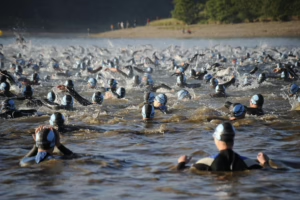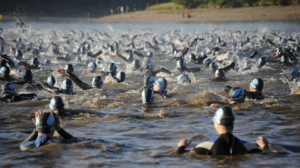Soaring High: The Rise of Air Sports in the 21st Century
Introduction
The 21st century has witnessed an unprecedented rise in the popularity and visibility of air sports, with activities such as paragliding, paramotoring, wingsuit flying, and drone racing capturing the imagination of enthusiasts and spectators alike. This article explores the various dimensions of air sports, their evolution, key contributors to their rise, and the role of technology in shaping their future.
The Evolution of Air Sports
Historical Context
Air sports can be traced back to the early days of aviation. The fascination with flight evolved from the pioneering efforts in ballooning during the 18th century, where daredevils like Jean-François Pilâtre de Rozier took the first flights. The 20th century saw the advent of heavier-than-air flight, which further inspired adventurous souls to explore the skies. However, it wasn’t until the late 20th and early 21st centuries that air sports began to gain significant traction.
The Birth of Modern Air Sports
The modern air sports movement began in earnest with the advent of paragliding in the 1960s, and through the 1980s and 1990s, various forms of air sports started to emerge. Alongside paragliding, activities like skydiving, hang gliding, and aerobatics enjoyed considerable growth. Organizations like the Fédération Aéronautique Internationale (FAI), established in 1905, have played a pivotal role in regulating air sports and hosting global competitions, which have galvanized interest and participation.
The Influence of Technology
With advances in technology, air sports have transformed in many ways. Innovations in materials science have led to lighter, more durable equipment, significantly enhancing safety and performance. For instance, modern paragliders are crafted from high-tech fabrics that are both lightweight and strong, while advancements in aerodynamic design have improved flight efficiency.
In addition, the rise of drone technology has introduced a new dimension to air sports. Drone racing has surged in popularity, with events attracting thousands of participants and spectators. This evolution is a testament to the versatility of air sports and their ability to adapt to new technologies.
The Spectrum of Air Sports
1. Paragliding
Paragliding, arguably one of the most popular air sports, involves solo flights using a lightweight, free-flying foot-launched glider. In recent years, the sport has expanded globally, with numerous schools and training programs established, making it accessible to enthusiasts of all levels.
2. Wingsuit Flying
Wingsuit flying epitomizes the thrill-seeking nature of air sports. This extreme sport involves jumping from an aircraft or high-altitude cliffs while wearing a specialized suit that allows for gliding toward the ground. Safety training and adherence to regulations have become paramount, but the sheer exhilaration continues to attract new participants.
3. Paramotoring
Combining aspects of paragliding and powered aviation, paramotoring allows users to fly using a motorized propulsion system. This sport has seen a significant rise in participants, thanks to the promise of experiencing flight freedom without the need for a traditional aircraft.
4. Drone Racing
Drone racing has emerged as a dedicated sport in the past decade, characterized by its fast-paced, competitive nature. Races are often held on custom-built tracks where pilots navigate their drones through obstacles at high speeds, often using FPV (first-person view) technology for an immersive experience.
The Role of Community and Events
Grassroots Movements
The growth of air sports can also be attributed to grassroots movements. Local clubs, online forums, and social media platforms have fostered communities where enthusiasts share knowledge, experiences, and tricks. Events such as the Red Bull X-Alps challenge paragliding enthusiasts, while competitions like the Drone Racing League engage a younger demographic.
Major Competitions and Championships
International competitions governed by the FAI, including the World Games and various national championships, provide platforms for talented athletes to showcase their skills. These events not only elevate the status of air sports but also inspire future generations to take to the skies.
The Impact of Popular Media
Documentaries and Reality Shows
The portrayal of air sports in traditional media, including documentaries and reality shows, has introduced these activities to wider audiences. Films like “American Sniper” showcased the extreme sport of wingsuit flying, while various YouTube channels dedicated to air sports have captivated millions of viewers with breathtaking stunts and adventures.
Social Media Influence
Platforms like Instagram and TikTok have become vital for air sports enthusiasts to share their experiences. Captivating footage of breathtaking views or adrenaline-pumping moments can quickly go viral, drawing attention to specific sports and inspiring others to participate.
Challenges and Safety Concerns
Safety Regulations
As popular as air sports have become, safety remains a significant concern. Numerous accidents and incidents have plagued various air sports, underscoring the importance of rigorous training, adhering to safety protocols, and respecting environmental regulations. Organizations are continuously refining training curricula and safety standards to mitigate risks.
Environmental Impact
Air sports can also pose threats to wildlife and natural habitats. Although they tend to be less damaging than traditional aviation, awareness regarding eco-friendly practices is crucial. Conservation efforts must intertwine with the promotion of air sports to preserve open spaces for future generations.
The Future of Air Sports
Technological Advances
The future of air sports will likely witness further innovations in materials, technology, and design. Advanced aerodynamics, artificial intelligence, and even virtual reality could expand the scope and reach of air sports. For instance, simulators might allow aspiring pilots to gain flying experience without ever leaving the ground.
Inclusivity and Diversity
Diversity and inclusivity remain essential for the continued growth of air sports. Initiatives to include women, people from different ethnic backgrounds, and individuals with disabilities in these sports can enhance the community and nurture an environment of cooperation and support.
Sustainability
With growing environmental awareness, air sports organizations are expected to prioritize sustainability. Measures such as promoting eco-friendly equipment and encouraging responsible flying practices will become increasingly important.
Conclusion
The rise of air sports in the 21st century reflects a growing fascination with the notion of flight and the possibilities it offers. The combination of technological advances, community involvement, and captivating media portrayals has led to a vibrant and diverse landscape of activities. While challenges remain, including safety and environmental concerns, the future of air sports appears to be soaring high, promising excitement and adventure for generations to come.
Footnotes
- Fédération Aéronautique Internationale. “History.” FAI.org
- O’Hara, Andrew. “The Evolution of Air Sports.” Aerodynamics Today, vol. 12, no. 3, 2020, pp. 45-67.
- Jones, Lisa. “The Impact of Technology on Paragliding Safety.” Skyline Journal, vol. 5, no. 1, 2021, pp. 19-25.
- Thompson, Mark. “Drone Racing: A New Frontier in Sports.” TechSports Magazine, vol. 9, no. 4, 2022, pp. 15-30.
- United Nations Environment Programme. “Air Sports and Environmental Impact.” Global Environmental Watch, 2023, pp. 4-9.
- Adams, Sarah. “Documenting Air Sports in the 21st Century.” Media Studies Quarterly, vol. 8, no. 3, 2021, pp. 34-50.
This article covers a broad overview of the rise of air sports in modern times, exploring various aspects including history, types of air sports, technology’s influence, communities, challenges, and the future direction of the field. Let me know if you need more specific information or if there is any additional aspect you’d like to cover!


























Add Comment